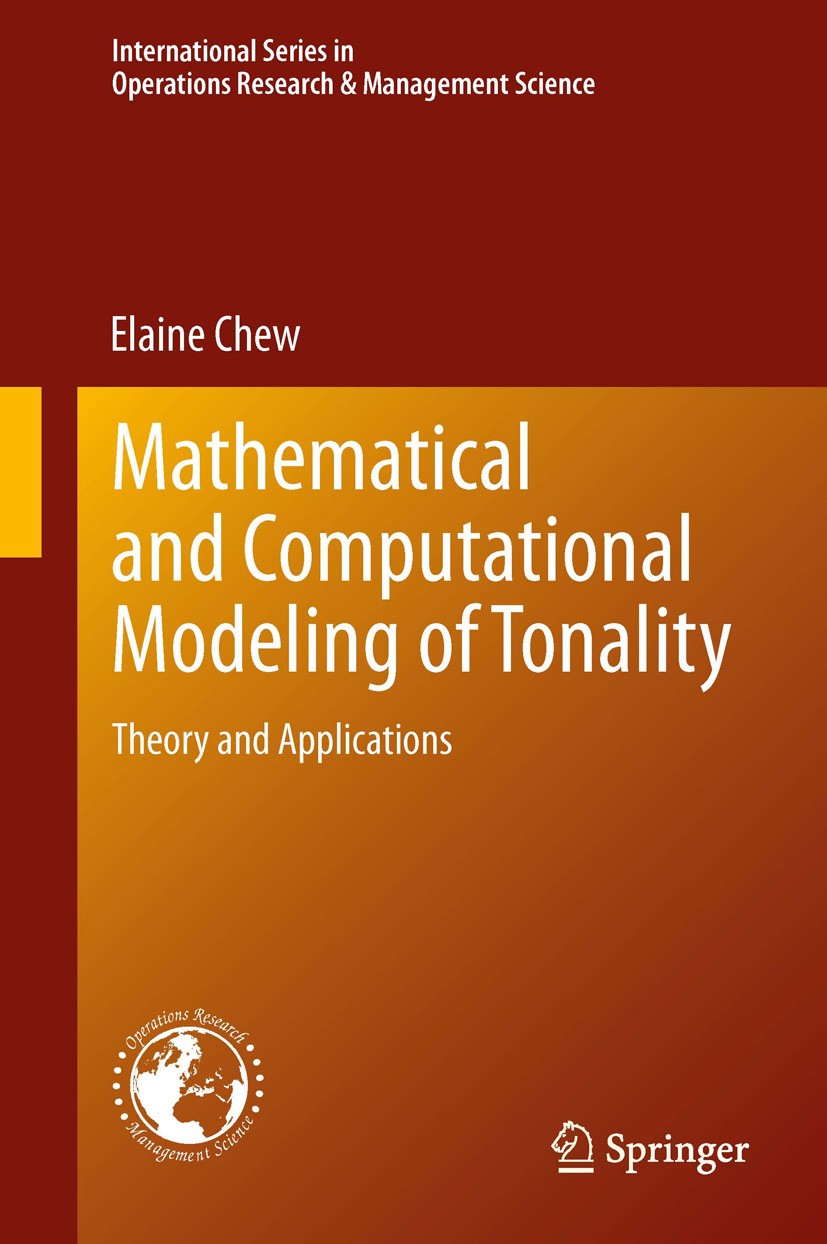| 书目名称 | Mathematical and Computational Modeling of Tonality | | 副标题 | Theory and Applicati | | 编辑 | Elaine Chew | | 视频video | http://file.papertrans.cn/627/626684/626684.mp4 | | 概述 | First book to connect mathematical representations of music with computational approaches to problem solving.Presents author’s Spiral Array geometric model for tonality.Author is known worldwide and u | | 丛书名称 | International Series in Operations Research & Management Science | | 图书封面 |  | | 描述 | .From the Preface:.Blending ideas from operations research, music psychology, music theory, and cognitive science, this book aims to tell a coherent story of how tonality pervades our experience, and hence our models, of music..The story is told through the developmental stages of the Spiral Array model for tonality, a geometric model designed to incorporate and represent principles of tonal cognition, thereby lending itself to practical applications of tonal recognition, segmentation, and visualization. Mathematically speaking, the coils that make up the Spiral Array model are in effect helices, a spiral referring to a curve emanating from a central point. The use of “spiral” here is inspired by spiral staircases, intertwined spiral staircases: nested double helices within an outer spiral..The book serves as a compilation of knowledge about the Spiral Array model and its applications, and is written for a broad audience, ranging from the layperson interested in music, mathematics, and computing to the music scientist-engineer interested in computational approaches to music representation and analysis, from the music-mathematical and computational sciences student interested in lea | | 出版日期 | Book 2014 | | 关键词 | cognitive science; computational models; mathematical programming; music information retrieval; music th | | 版次 | 1 | | doi | https://doi.org/10.1007/978-1-4614-9475-1 | | isbn_softcover | 978-1-4899-7929-2 | | isbn_ebook | 978-1-4614-9475-1Series ISSN 0884-8289 Series E-ISSN 2214-7934 | | issn_series | 0884-8289 | | copyright | Springer Science+Business Media New York 2014 |
The information of publication is updating

|
|
 |Archiver|手机版|小黑屋|
派博传思国际
( 京公网安备110108008328)
GMT+8, 2025-11-11 19:41
|Archiver|手机版|小黑屋|
派博传思国际
( 京公网安备110108008328)
GMT+8, 2025-11-11 19:41


